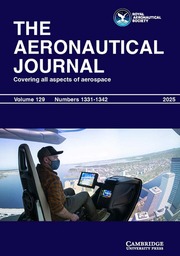Article contents
Effect of complex internal grid pattern variations on the subsonic aerodynamic characteristics of grid-fins
Published online by Cambridge University Press: 13 August 2025
Abstract
This CFD study investigates the aerodynamic characteristics of various internal grid patterns of grid fins without missile bodies, focusing on their influence on aerodynamic performance in subsonic flight regimes. Research examines four distinct grid fin lattices through comprehensive numerical simulations at Mach numbers 0.1, 0.3 and 0.5, for varying high angles of attack ranging between 0o ≤ α ≤ +45o. For validation, comparison between current numerical results and a previous experimental study results was carried out (good agreement within 9.8% error). The numerical results reveal that the diamond cell pattern demonstrates increased lift generation but incurs higher drag, while the square pattern minimises drag and pitching moment, favouring weight-efficient designs. The hexagonal grid fin excels in stall delay and post-stall performance, enhancing manoeuverability and stability at the expense of increased pitching moments. The triangular pattern offers balanced aerodynamic performance with high aerodynamic efficiency at lower speeds, making it versatile for various applications. The analysis offers key insights into grid cell pattern’s aerodynamic effects, aiding grid fin design optimisation for improved aerodynamic efficiency and controllability across various flight conditions and high angles of attack.
Information
- Type
- Research Article
- Information
- Copyright
- © The Author(s), 2025. Published by Cambridge University Press on behalf of Royal Aeronautical Society
References
- 1
- Cited by


